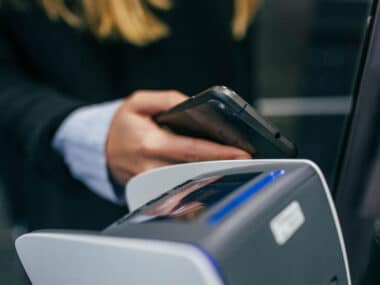According to the United States Census Bureau, there were 38.1 million people living in poverty in 2018. What’s more, people who fall into impoverished situations often have trouble getting out of them due to the poverty cycle. Once a person has experienced a situation that puts them into poverty, they often have trouble affording anything else, thus continuing the cycle of poverty.
People living with low incomes are often the ones who must cope with this phenomenon. When earnings are low or you’re working for minimum wage, it can be difficult to afford basic everyday necessities, let alone emergency expenses such as medical care. Ultimately, this inability to afford things can cause a mountain of debt to develop, furthering the cycle of poverty even more.
Fortunately, there are ways a person with a low income can get out of debt. If you are someone living with debt and earning very little income, follow the steps below to get started on your way to bettering your financial situation and eventually get out of debt.
Table of Contents
Assess Your Debt
Before you can pay off your debts, it’s important to understand where you have debt. From credit cards to utility companies and even friends and family, there are a number of people to whom you might owe money. Assess your debts to make sure that you know what debt you owe and to whom.
Open a line of communication with your creditors. Doing so will give your creditor an understanding of your situation and your intentions to pay back your debts. Depending on the reason you have fallen into debt, some credit card companies may be able to offer assistance in the form of a payment plan while you pay back your debts. In some cases, your creditor may be able to work with you to reduce your monthly payments or make changes to what you are charged in interest.
Set Realistic Goals
It’s not enough to commit to paying off your credit card debt by avoiding overspending. When it comes to creating an action plan to get yourself out of debt, it’s important to set specific, realistic goals that you’re capable of achieving. If you set unrealistic goals, it may put you in a worse situation or crush your morale, lessening your desire to get out of debt altogether.
To set a goal, calculate how much you can put towards your debts each month, then divide your total debt by that number. This will give you a timeline of how many days, weeks, or months it will take you to pay off your debt, depending on your pay schedule.
Set a Reasonable Budget
Creating an action plan for your money isn’t enough. In order to maintain steady payments on your debt, you’ll need to set a budget.
Determine what your income and expenses are, both short and long term. Knowing how much money you bring in and what you need to pay for every month will give you an idea of the money remaining that you can use to chip away at your debts. Once you’ve planned your necessary expenses carefully, you can create a realistic plan to get yourself out of debt.
Use a Popular Debt Repayment Method
There are a number of popular ways you can repay debts. The method that works best for you will depend on how much debt you have and what your monthly income and expenses look like.
Snowball Method
The snowball method of debt repayment asks that you start by paying off your smallest debts first. Once those are paid off, the amount you were putting towards those debts is then added to the expense of a larger debt. As you continue to pay off larger and larger debts, you continue to roll the money you were putting towards the smaller debts, similar to a snowball rolling down a hill.
There are pros and cons to using the snowball debt repayment method. One pro is that you’re able to chip away at your debt more quickly than you would by only paying monthly minimums, which can be encouraging. A disadvantage to the snowball method is that you’re tacking on interest to the larger debts while you’re paying off the lesser ones.
Avalanche Method
The avalanche method of debt repayment asks that you pay debts with the highest interest rate first regardless of balance, working your way down to the debts with the lowest interest rate. In most cases, this method makes sense because you’re paying less in interest, but it can be hard to stay motivated when using the avalanche method, as it can take longer to pay your debts in full.
Consolidate or Refinance Debt
Another way to work on getting out of debt with low income is to consolidate or refinance your debts. While this can simplify your finances, it should be done cautiously. Consolidating or refinancing your debt does not make it go away, but it can hasten or extend the timeline in which you have to repay your debts. Before agreeing to anything, it’s important to understand the terms and determine whether you can afford a new repayment structure.
Consolidating or refinancing your debt can be helpful in some situations. If you’re looking to get a lower interest rate on a substantial amount of debt, refinancing may be the right answer. In other cases, consolidating your debt could allow your monthly payments to go down, making paying off your debts easier to fit into your budget.
To consolidate your debts, you can:
- Consult with a credit counselor.
- Apply for a personal loan or home equity loan.
- Ask family or friends for help.
- Transfer your debt balance to a credit card with a better interest rate.
Refinancing is essentially the act of taking out a new debt in place of your old debt, often at a better rate. Talk with the people to whom you’re indebted and see if they can offer to refinance, then assess if refinancing will put you in a better situation to repay your debts.
Strategically Apply for Deferment or Forbearance
If you are incapable of making regular payments on your debts for a period of time, it might be worth it to consider applying for deferment or forbearance.
Deferment is postponing payment on your debts. Typically, this can be done for a period of one to three years, depending on who your debt is with and your financial situation. Forbearance is a temporary postponement of debt— typically mortgage debt — that allows you time to pay back missed or delinquent payments.
Both deferment and forbearance can be useful in helping someone chip away at their debt on a low income. However, skipping payments or making payments late on your debt could result in your loan being defaulted on, which could ruin your credit score and lessen your chances of getting a new loan in the future.
Boost Your Income
A side gig can help you earn extra money to put towards your debts. This is an additional gig on top of your full-time job. Popular side gigs include freelance writing, photography, and consulting clients on how best to do the work that you do full-time.
It may be difficult, but with the right action plan in place, you can get yourself out of debt on a low income.
Image Source: https://depositphotos.com/





